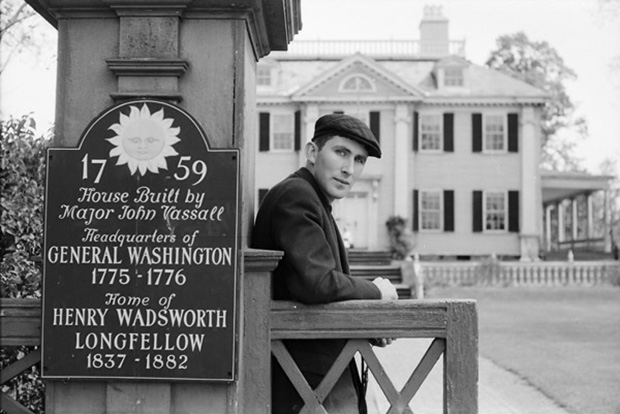
'Whatever you're up to, make yourself noticed!'
Artist, illustrator and author Tomi Ungerer remembers his wild, early years in NYC in this exclusive essay
A biographical detail helps us understand most artists. Yet Tomi Ungerer’s work is so strange a mix of fairy tale and pornography, protest posters and illustrated aphorisms, that knowing something about his early life and milieu goes a long way towards comprehending his chimeric output. To mark the opening of the Phaidon author’s retrospective at New York’s Drawing Center, running now until 22 March he has penned a lengthy essay about his early days in New York. We reproduce the first part of it here with the second part to follow later this week. It's a briliant read from a brilliant raconteur.
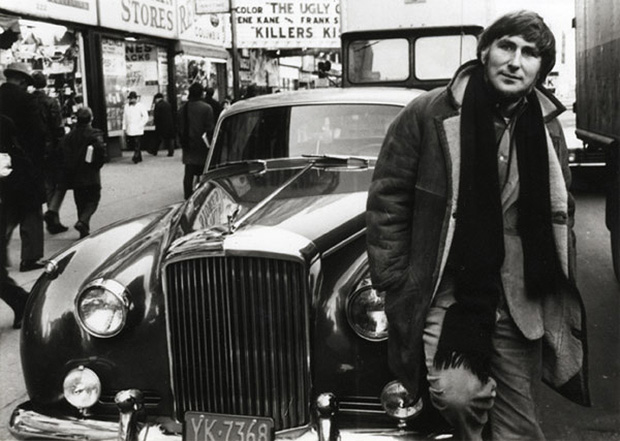
"It is still a recurrent nightmare. I am walking down Fifth Avenue in the five-o’clock rush, through pouring rain, umbrellas clawing at each other. A bloke in a slicker is handing out leaflets. Given a quick glance, they are tossed into puddles. I take one. It’s an original drawing of mine. 'For heaven’s sake, he is giving away my work!' I retrace my way, salvaging whichever pieces of paper are still drowning in the gutter.
"This dream must find its source in my earliest days in New York (I arrived in 1956). Running from one appointment to another to sell my work to publishers, magazines, and ad agencies, I carried my drawings in a paper shopping bag. One day I was caught in a downpour on Broadway and 43rd Street and took shelter-skelter in a pharmacy. I asked for a cardboard box to give my samples a safe haven. Wish granted, I went to my next appointment. I entered the art director’s office and deposited my carton on his desk. His face broke out in a puzzled grin, followed by outright guffaws. It turned out that, in his kindness, the pharmacy clerk had given me a wholesale box for Trojan contraceptives. Only later that evening did my girlfriend explain what the brand stood for. I kept the box until I had enough money to afford a proper portfolio. It became my own trademark and with its subversive contents, fitted the fabled Greek epic: the Trojan Horse disgorging its consequences. I was even welcomed as 'Lord Condom.' The lesson? Whatever you are up to, make yourself noticed. Anyway, drawings, like condoms and banana peels, can be very slippery.
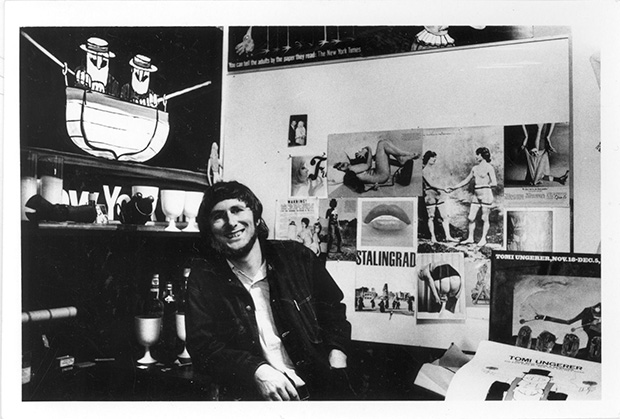
"I had fallen in love with New York City. It was a dream come true, oneirically peopled with generous, open-minded folk. I felt welcome everywhere. To this day, I can feel its pent-up energy, the tingling excitement of the unexpected, the farfetched within reach. My sense of humour flourished by osmosis; New York replaced all other muses and became my source of inspiration. I was successful from the start.
I shall mention here a few of my abodes, reflective of my ascent. I started out in a dingy dark basement room in the West 70s. My Irish landlady, with a teetering inclination for whisky, was a “Madame” of some renown who once ran Chicago’s biggest and most plush bordello.
A few years later I bought my first brownstone in the Village, formerly Aaron Burr’s house (fittingly of ill repute). I had it painted in pink, the only building of its color in Manhattan. Later, I established my studio on 42nd Street and Broadway in New York’s “shameful,” riffraff porno district in the former office of Flo Ziegfeld. It was oak paneled, with mullioned windows, and a Felliniesque corner terrace ornamented with huge convoluted ceramic scrolls. A perfect nest for my follies.
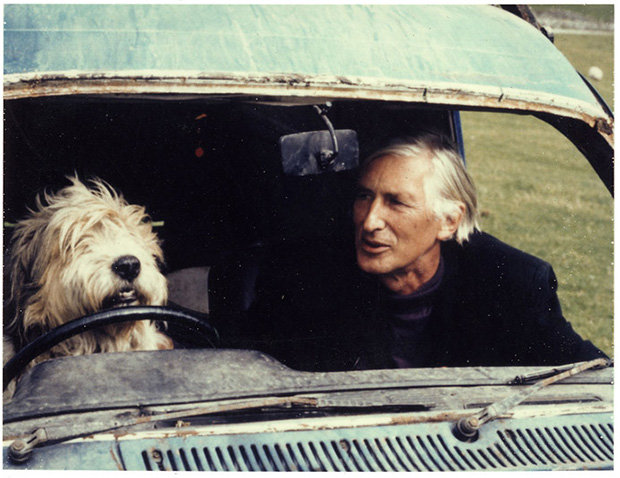
"Then there was my “manse” in East Hampton. Sometimes, I would sit on my portico with a willing slave tied to one of its columns. Equipped with my high velocity Remington, I would lie in wait for the guests of my party-loving neighbor, the son of Max Ernst. It was mischievously that I triggered my whizzing bullets over his ducking guests. I always kept a silver one for Peggy Guggenheim, but I didn’t know what she looked like. Little did he know that I was the one who broke into his house with a female acquaintance during his absence, leaving behind an empty bottle of Veuve Clicquot and crumpled bed sheets. So much for the art scene!
"Yet, in East Hampton, other rebellious minds were at work as well; I was not the only one! There is one party I remember, given by a famous psychiatrist who lived down the lane. In the middle of the hubbub, his mother descended the stairs with regal dignity, aimed for the carpeted floor, squatted, and, raising her skirts, drowned Oedipus in a ruinous puddle. I applauded. Where others had parties, I had a ball. This is but one example of my pooling sources of inspiration.
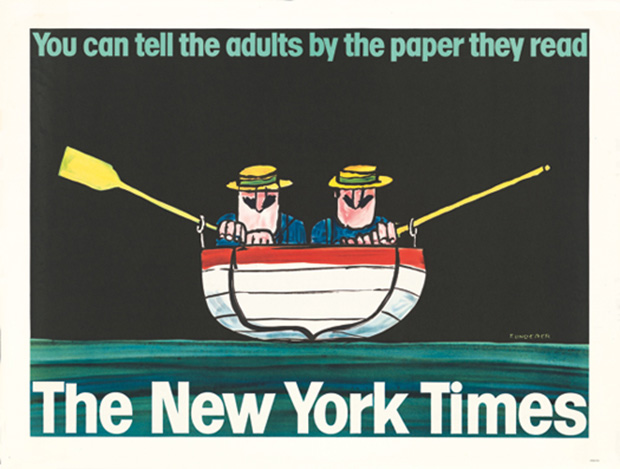
'My pranks, mostly of dubious taste, were my anger’s safety valve — a way to put into practice the sheer and unshorn provocation of my satirical work. Spreading anarchy by means of the absurd was part of my creative process. My reputation? A balancing act between the good and the worst.
"My last residence was a duplex on MacDougal Street, occupied already by a thumping, furniture-moving poltergeist. Standing alone in the living room, I would speak to him, asking him to please keep quiet! Many female companions will tell you about the footsteps climbing the stairs, the lights turning on and off, and the shadow under the door that when opened, revealed nothing! Perhaps it was not a poltergeist but my alter ego gone gaga. Was my presence in New York like my poltergeist in this apartment? Today, looking back, I would say “yes!”’
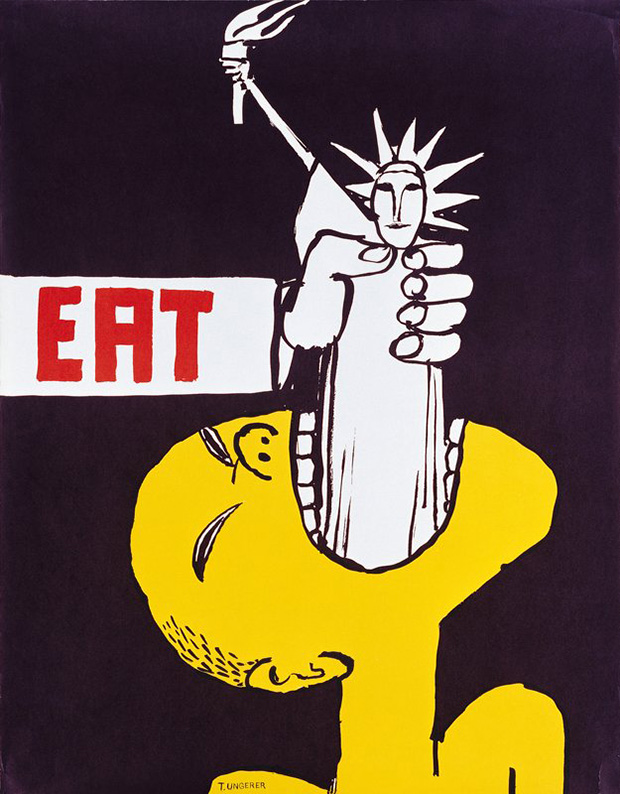
This is the first part of a two part essay by Tomi Ungerer which appears in the catalogue for his retrospective at New York’s Drawing Center. We will be publishing part two, later this week. To coincide with the show our friends at Artspace have created a limited edition print of his anti-Vietnam war illustration Eat, 1967. You can buy that at Artspace here and also read a great interview with Tomi at Artspace here. To browse all Tomi Ungerer's great Phaidon books click here. And remember, look out for part two of Tomi's essay later this week.